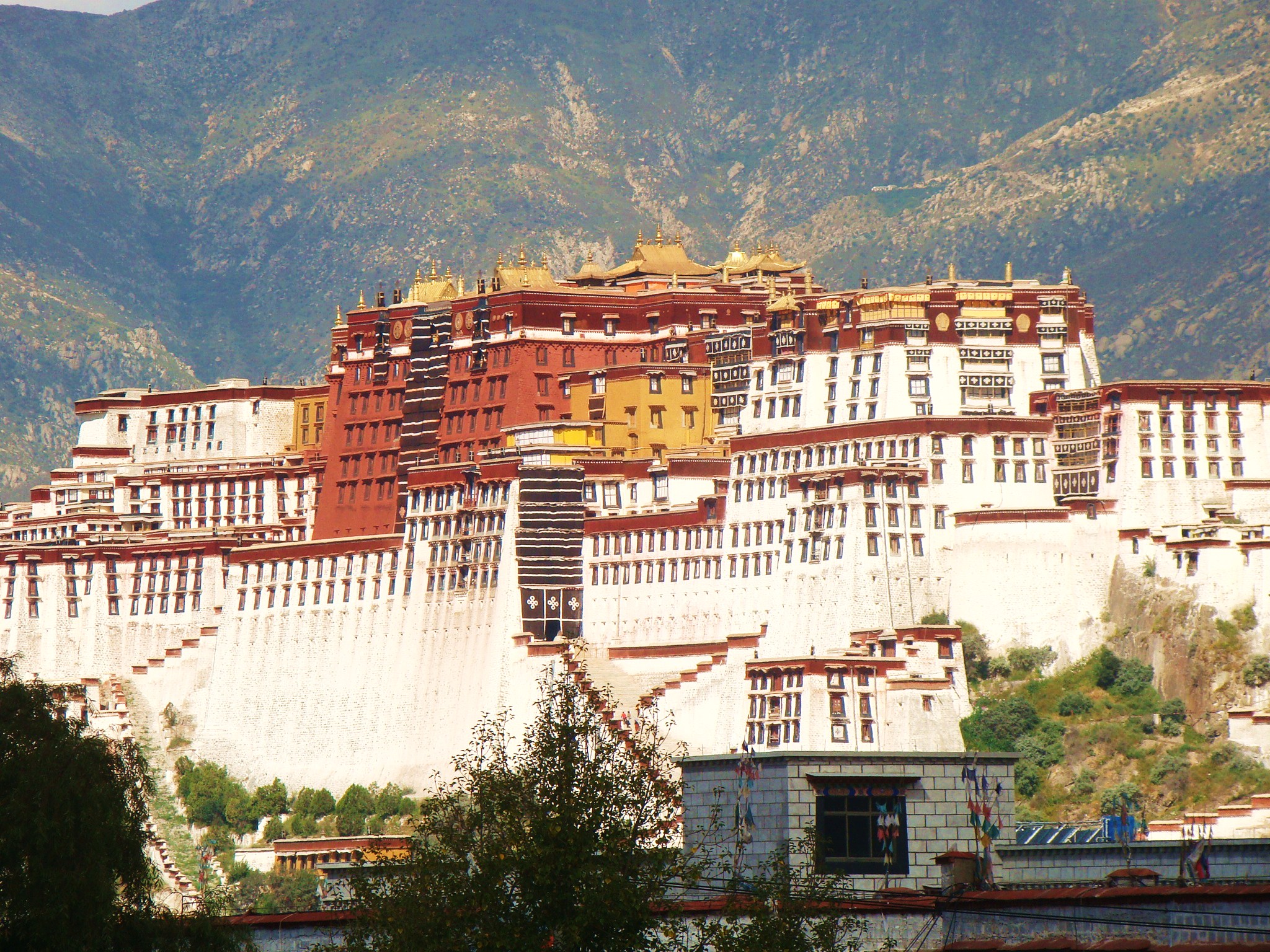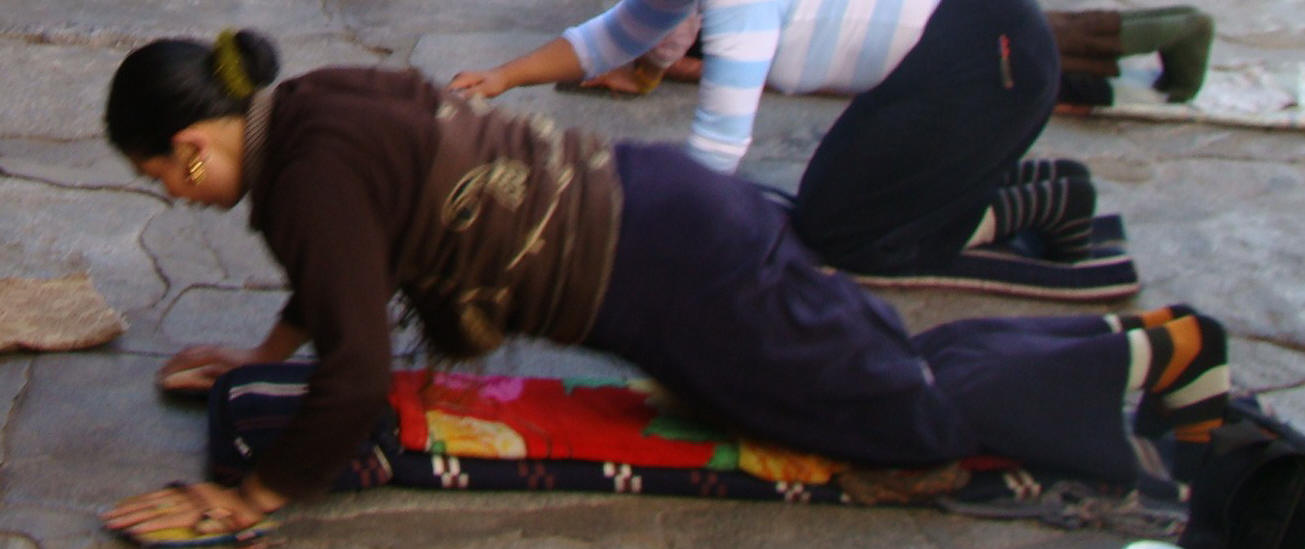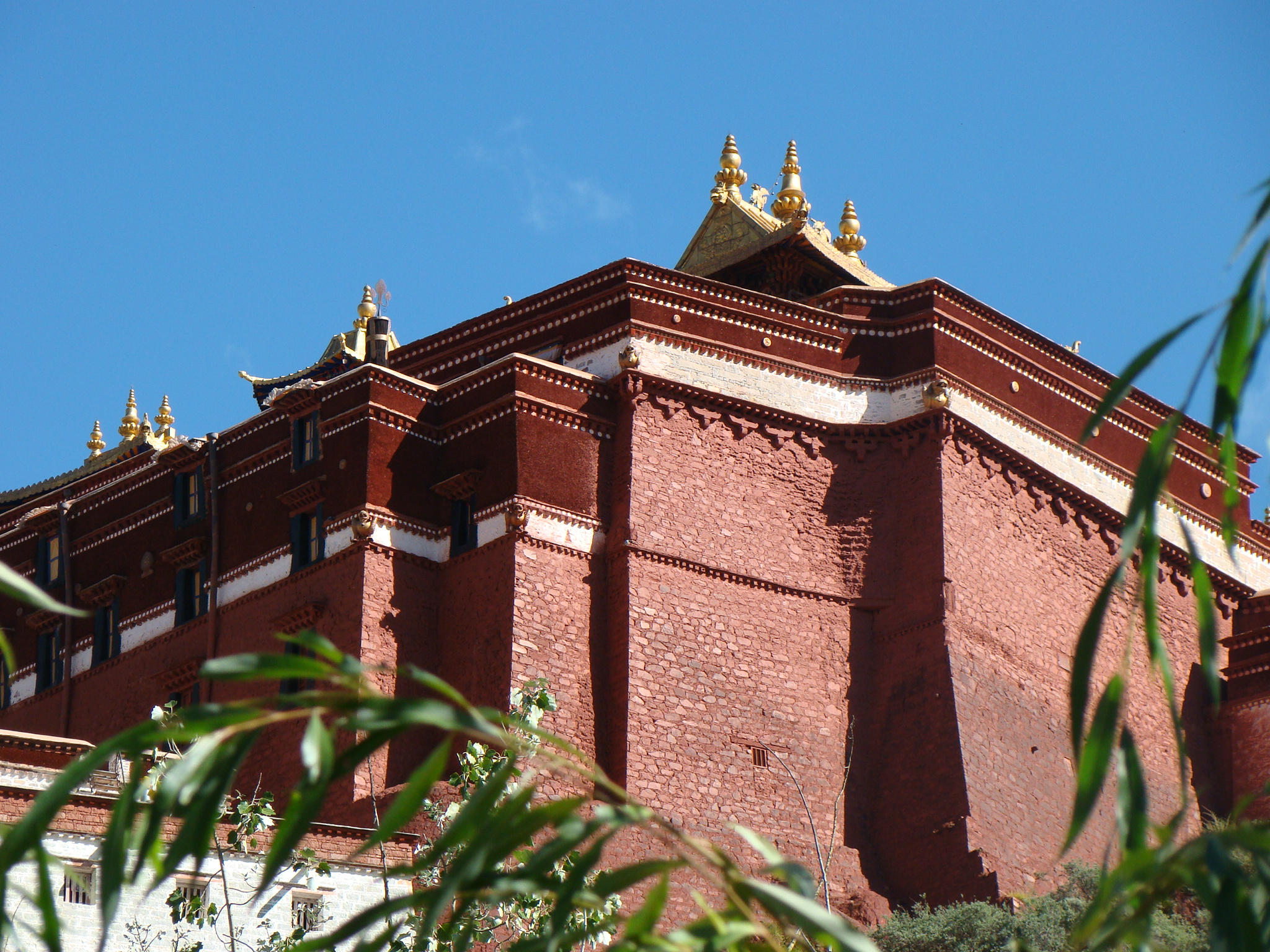|
Beyond
all doubt, the Potala Palace is the number uno attraction in
all of Tibet. The majesty and grace of the palace and the
fervor of the captivating pilgrims surrounding it, compares
only to the thrill of seeing Egyptian tombs for the first
time.
 The
fact that there are still Tibetan pilgrims circumambulating,
prostrating themselves, twirling their prayer wheels and
whispering prayers gives a life to this place that no other
ancient attraction can offer. For thousands of years,
Tibetan Buddhists have clung to their roots, their beliefs
and their form of worship. To see this in action, not as a
play or enactment, but as it has been over the centuries is
an incomparable experience for any traveler, especially
those seeking enlightenment or deeper thought. Even though
the Chinese don't let tourists see much of the inside of the
Potala, it is still a must-see attraction. Spend a day
roaming the outer kora (path that encircles the holy
edifice) with the pilgrims, enjoy the beautiful park build
by the communist government, and be sure to take your best
camera! Within the park confines there are stupas and
incense burners where you can join the pilgrims for a
smaller kora. The
fact that there are still Tibetan pilgrims circumambulating,
prostrating themselves, twirling their prayer wheels and
whispering prayers gives a life to this place that no other
ancient attraction can offer. For thousands of years,
Tibetan Buddhists have clung to their roots, their beliefs
and their form of worship. To see this in action, not as a
play or enactment, but as it has been over the centuries is
an incomparable experience for any traveler, especially
those seeking enlightenment or deeper thought. Even though
the Chinese don't let tourists see much of the inside of the
Potala, it is still a must-see attraction. Spend a day
roaming the outer kora (path that encircles the holy
edifice) with the pilgrims, enjoy the beautiful park build
by the communist government, and be sure to take your best
camera! Within the park confines there are stupas and
incense burners where you can join the pilgrims for a
smaller kora.
Perched on Marpo Ri hill, 130
meters above Lhasa valley and backlit by a collection of
noble mountain
ranges in the distance, stands the splendid Potala Palace, the
former winter palace (home) and government building of the Dalai Lama
and his large staff. This was the seat of the Tibetan
government, where all ceremonies of state were held before
the Tibetan government fled into exile in Dharamsala, India
in 1959
With
a colossal five-square miles of complex, this nine stories high
edifice with over 1000 rooms and interior space in excess of
130,000 square meters, is beyond breathtaking. Whitewashed except for the central portion, which is yak-blood
red, this colossal structure is crowned by towers and gilded peaks. It has reception rooms, chapels, and
living quarters for thousands
of monks. It also housed a school for religious training of
monks and administrators. Surprisingly, there was also a
prison within its confines.
 Early legends
relating to the
rocky hill speak of a sacred cave, considered to be the dwelling
place of the Bodhisattva Chenresi (Avilokiteshvara), which was utilized
as a meditation camp and retreat by Emperor Songtsen Gampo in the seventh
century AD. In 637 Songtsen Gampo built a large palace on the hill.
This structure stood unchanged until the seventeenth century
(1645), when it was incorporated into the foundations of the
glorious buildings still standing today by Lobsang Gyatso,
the 5th Dalai Lama. By odd fate, the
building was not destroyed during the cultural revolution.
It was slightly damaged during the Tibetan
uprising against the invading Chinese in 1959. but, unlike most other
Tibetan religious structures, it was not raided and razed by Mao's Red Guards
during the 1960s and 1970s, evidently through the personal
intervention of Chou En Lai. As a result, all the chapels and their
artifacts are very well preserved, which leaves a immeasurable
treasure for the conquerors who charges a pretty penny for a
fast peak at a few rooms. Early legends
relating to the
rocky hill speak of a sacred cave, considered to be the dwelling
place of the Bodhisattva Chenresi (Avilokiteshvara), which was utilized
as a meditation camp and retreat by Emperor Songtsen Gampo in the seventh
century AD. In 637 Songtsen Gampo built a large palace on the hill.
This structure stood unchanged until the seventeenth century
(1645), when it was incorporated into the foundations of the
glorious buildings still standing today by Lobsang Gyatso,
the 5th Dalai Lama. By odd fate, the
building was not destroyed during the cultural revolution.
It was slightly damaged during the Tibetan
uprising against the invading Chinese in 1959. but, unlike most other
Tibetan religious structures, it was not raided and razed by Mao's Red Guards
during the 1960s and 1970s, evidently through the personal
intervention of Chou En Lai. As a result, all the chapels and their
artifacts are very well preserved, which leaves a immeasurable
treasure for the conquerors who charges a pretty penny for a
fast peak at a few rooms.
As the spiritual
and political heart of Tibet, before the Chinese invasion and
subsequent occupation, this 425 ft tall creation is a stupendous
and
magnificent monument that stands as a witness to the once-splendid Tibetan
kingdom. With its three kora circuits and tombs of many previous
Dalai Lamas, it remains a major pilgrimage site for Tibetan
Buddhists.
|
Potrang Marpo
(the Red Palace, 1690-1694) houses several chapels, sacred
statues, and the tombs of eight Dalai Lamas.
 The
heart and soul of the Red Palace is the Great West Hall, the
enthronement hall. Its walls are covered with murals
depicting scenes from the lives of all the Dalai Lamas,
Tibetan kings and various apparitions of the Bodhisattwa
Avalokitshvara. If you're with a private guide you'll have
enough time to savor the colors and scents of the place,
while tours are rushed through in one hour. The
heart and soul of the Red Palace is the Great West Hall, the
enthronement hall. Its walls are covered with murals
depicting scenes from the lives of all the Dalai Lamas,
Tibetan kings and various apparitions of the Bodhisattwa
Avalokitshvara. If you're with a private guide you'll have
enough time to savor the colors and scents of the place,
while tours are rushed through in one hour.
The four other rooms
surrounding the Great West Hall have the history of
Tibetan
Buddhism as their spiritual message. Its beginnings are
marked by the Hall of Padmasambhava - devoted to an Indian
saint. The next station is the hall of the reformer,
Tsongkhapa. The third hall is devoted to his reforms and his
next four incarnations. The last hall contains the burial
stupas of the 5th, 10th and 12th Dalai Lamas. Stupas are
relic pagodas, up to 14m/46ft high, heavily gilded and
re-gilded and inlaid with precious stones. The central stupa
of the 5th Dalai Lama is the most outstanding treasure of
the entire palace. Also eight Tibetan priest-kings are
buried in similar stupa shrines in the Red Palace. The
so-called Bridal Chamber or Meditation Cave is also located
in the Red Palace. This room which is laid out like a cave
and commemorates the founding years of Lhasa and the
beginnings of the Potala and Tibetan Buddhism. The
construction required the labor of over 7000 workers and
1500 artists/craftsman over 4 years.
|
